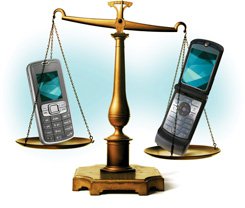Teens Tackle Real-World Math in Oklahoma
How to bring high tech to your school at a low cost.

Math teacher Telannia Norfar came to teaching after earlier stints in telecommunications and journalism, so she appreciates real-world applications of learning. To make sure her ninth graders at Northwest Classen High School, in Oklahoma City, Oklahoma, see those connections, too, Norfar develops projects that put math concepts to work in authentic ways, and she adds technology to the mix whenever possible.
In one project, students use algebra to analyze variable pricing of local cell phone plans. "All students either have or want a cell phone," Norfar says, so this topic is a natural. Advertisements from cell phone companies typically emphasize low monthly rates, but additional charges -- such as for texting -- can push actual costs higher. Norfar, she adds, asks students to "look at all of the details of a phone plan to create an equation that will reflect the real cost."
The three-week project involves translating marketing language into linear formulas that compare pricing variables. Students also have to think about their own mobile phone habits to figure out which services they want in an ideal plan. Then, acting as consultants, they create electronic presentations, including graphs, to explain their findings to the school's parent-teacher organizations and to a panel of judges.
Norfar has mapped out all the details on a wiki chart, free software used to organize information. In planning a project, she considers the big ideas (in this case, understanding equations in everyday situations) as well as the content and technology standards the project will meet. Norfar's classroom has a desktop computer for students, plus graphing calculators, her school-issued laptop, and a projector, as well as access to a mobile cart of laptops she shares with other instructors.
Her students have prior experience using Microsoft's PowerPoint, a slide show application that comes with most PCs, but she teaches them how to improve their presentations by making storyboards to organize their thoughts in five well-designed slides. The result: presentations that not only demonstrate student understanding but also deliver a valuable financial-literacy resource to Northwest Classen families.
Suzie Boss is coauthor of Reinventing Project-Based Learning: Your Field Guide to Real-World Projects in the Digital Age. She also blogs for Edutopia.org.
This article is the fourth of four that describe how schools integrate technology without spending a lot of money. If you haven't seen the others, start with the first one, and read how a Colorado school uses classroom tech tools on a budget.